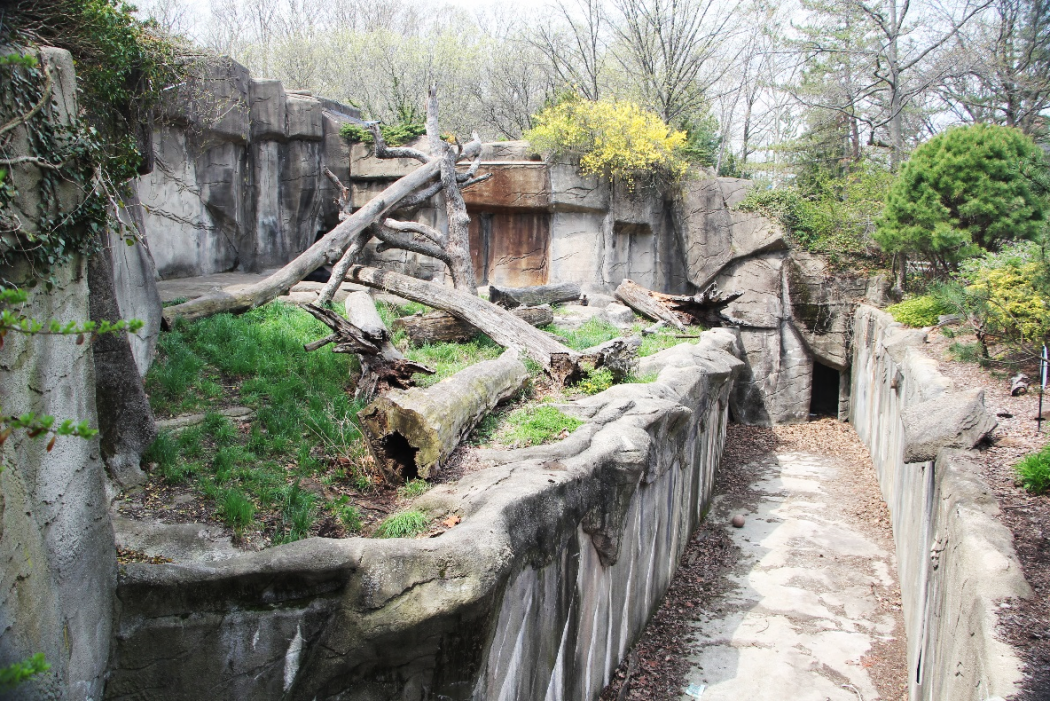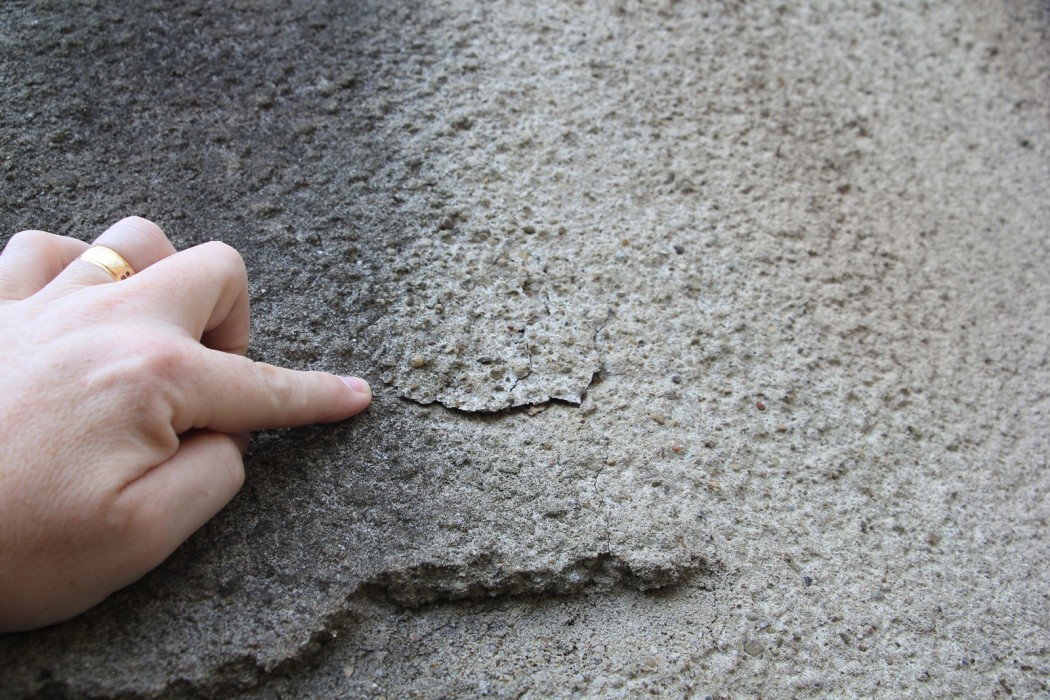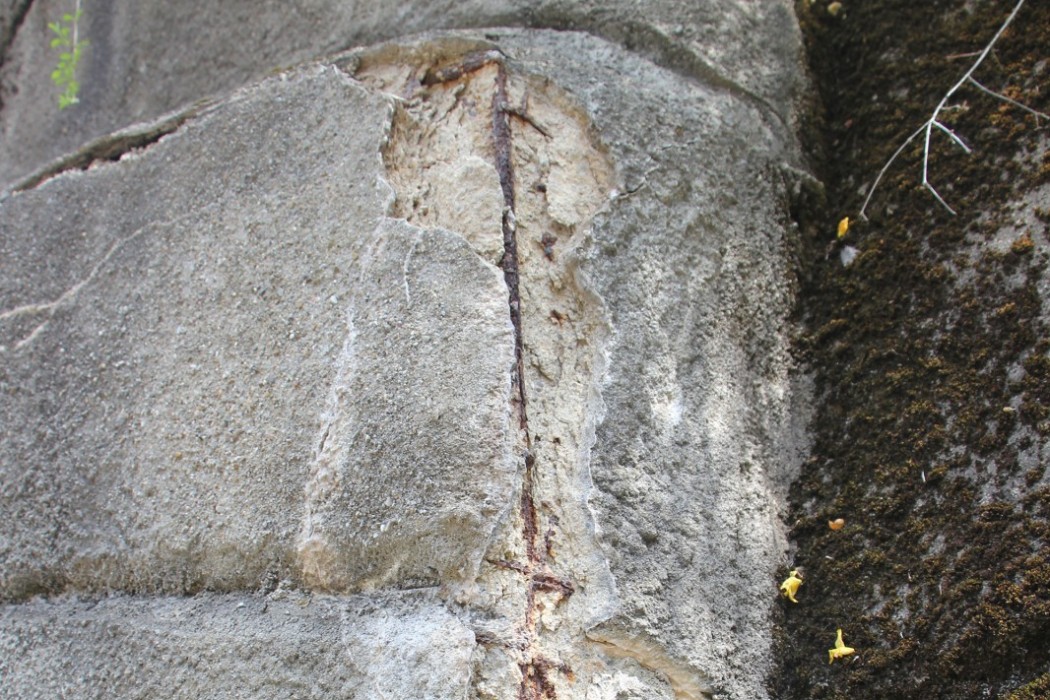WJE PROJECTS
Cleveland Zoo, Tiger and Sloth Bear Exhibit
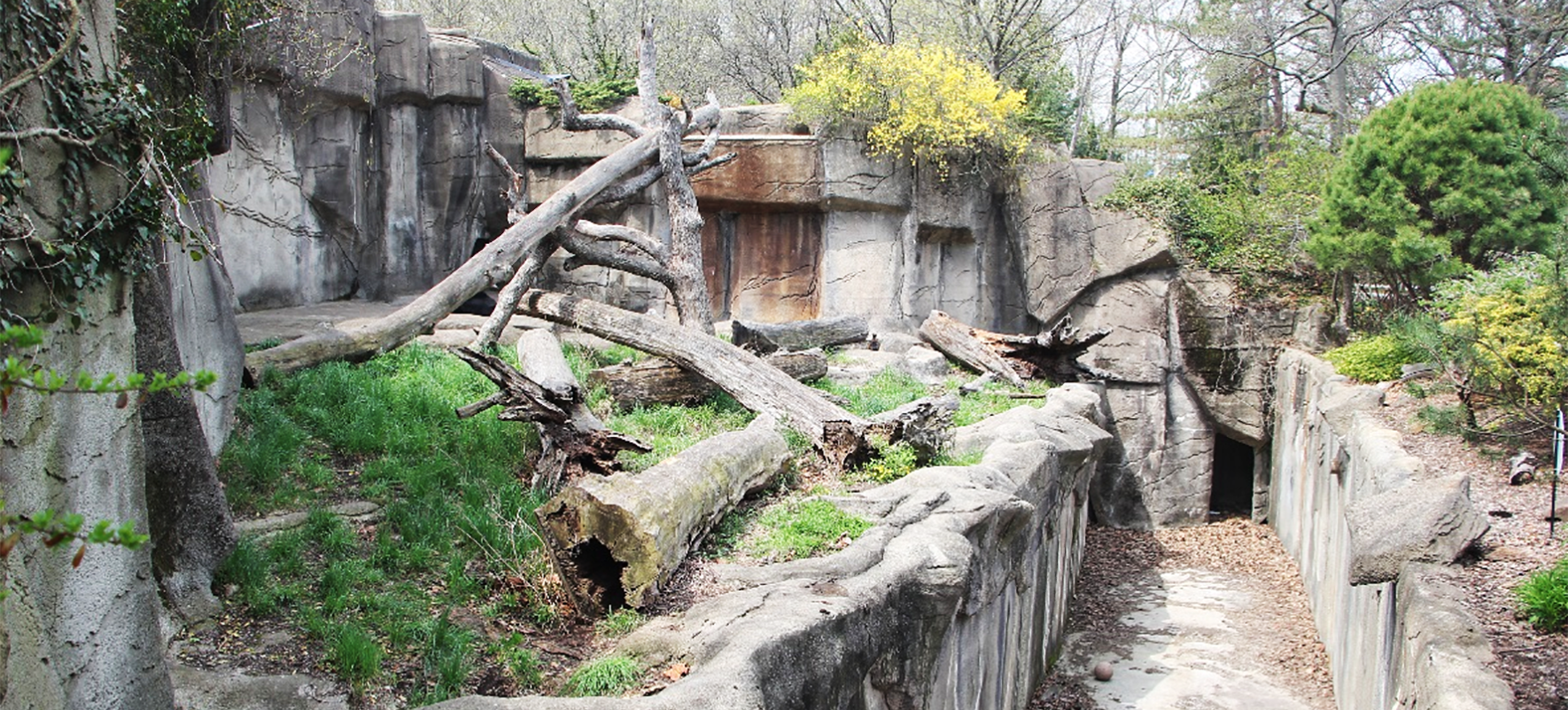

CLIENT |
Van Auken Akins Architects, LLC |
LOCATION |
Cleveland, OH |
Evaluation of Gunite Faux Rock Themework
In 2015, the zoo began a program to renovate and expand the exhibits. Preliminary plans called for the salvage, rehabilitation, and incorporation of much of the existing themework into the new exhibit. WJE was retained to perform a condition assessment of the existing gunite faux rock themework walls and to develop conceptual repair options for consideration by the zoo and design team.
BACKGROUND
The tiger and sloth bear exhibit at the Cleveland Metroparks Zoo includes gunite faux rock walls that divide the exhibits and conceal elements such as the moat wall, animal holding facility, and access points. The tiger enclosure was constructed circa 1961, while the sloth bear enclosure was constructed as an addition.
Gunite is a pneumatically-applied concrete, also known as dry-method shotcrete.
SOLUTION
Working closely with zoo staff to schedule the requisite isolation of the animals, WJE visually examined all readily discernable portions of the tiger and sloth bear exhibit from within the enclosures, noting and photographing typical and atypical cracks, spalls, efflorescence, and other distress to the gunite. WJE also used sounding techniques to identify imperceptible distress, such as internal delamination of gunite layers. Using existing breaches in the gunite, WJE was able to determine that the themework walls were typically hollow, constructed on a steel armature and without waterproofing at integral planters and pools.
Given the age and weather exposure of the gunite themework, the walls were generally in fair condition with localized areas of significant distress. WJE provided conceptual repair options (along with corresponding advantages and disadvantages) for localized repair of the themework or over-coating the existing themework with a new, reinforced layer of gunite.
Based on the findings and the overall project constraints, the zoo and design team elected to repair localized distress and overcoat the remaining themework to provide aesthetic uniformity between new and existing themework.
RELATED INFORMATION
-
 We have pioneered the use of nondestructive evaluation methods—such as ground penetrating... MORE >Services | Nondestructive Evaluation
We have pioneered the use of nondestructive evaluation methods—such as ground penetrating... MORE >Services | Nondestructive Evaluation -
 Our professionals deliver practical repair and rehabilitation services that maximize the... MORE >Services | Repair and Rehabilitation
Our professionals deliver practical repair and rehabilitation services that maximize the... MORE >Services | Repair and Rehabilitation -
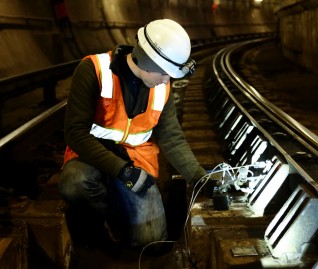 We engage a full suite of state-of-the-art instrumentation and monitoring capabilities to test... MORE >Services | Instrumentation and Monitoring
We engage a full suite of state-of-the-art instrumentation and monitoring capabilities to test... MORE >Services | Instrumentation and Monitoring



































